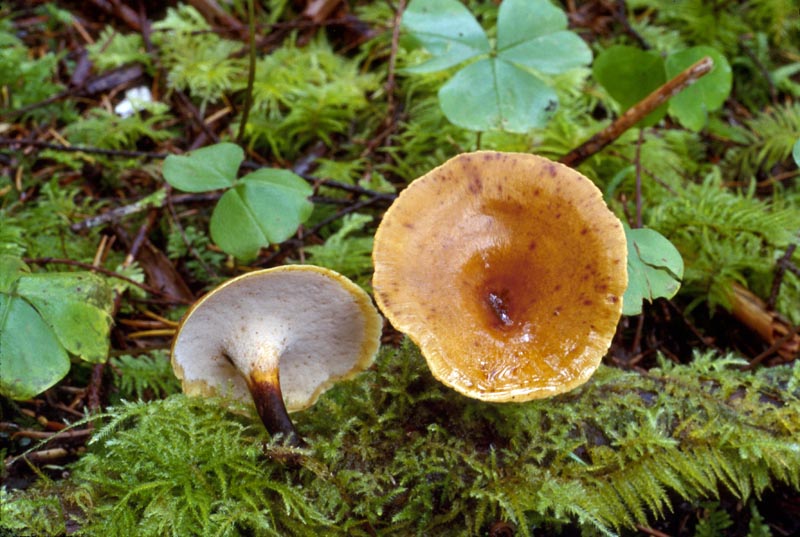Habitat: hardwood and conifer logs, around stumps, and on the ground from a buried sclerotium or wood.
Conservation Status: Not of concern
From spring through fall, species of Polyporus can be found on hardwood and conifer logs, around stumps, and on the ground from a buried sclerotium or wood. They have in common stipes that are central to off-center, caps that are depressed in the center, small to larger pores that are often decurrent, and tough, corky to leathery flesh. In the PNW, there are three species that look very similar---P. melanopus, P. badius (Persoon) Schweinitz, and P. varius Persoon: Fries. All have brownish caps, very small white pores, and a black velvety covering on a portion of the stipe. In P. melanopus and P. badius, the black extends nearly to the apex of the stipe, while in P. varius only the base or lower half is black. The first two species can be separated on the basis of the occurrence of clamp connections---they are present in P. melanopus (and P. varius) and absent from P. badius. P. tuberaster (Persoon: Fries) Fries also occurs in the PNW. It has larger pores and develops from an underground sclerotium. Jahnoporus hirtus (Quélet) Nuss is another stipitate polypore in our area. It has a gray-brown, finely pubescent cap and eccentric stipe that is usually deeply embedded in the substrate, tough flesh, iodine odor, and bitter taste.
PNW Herbaria: Specimen records of Polyporus melanopus in the Consortium of Pacific Northwest Herbaria database
CalPhotos: Polyporus melanopus photos



